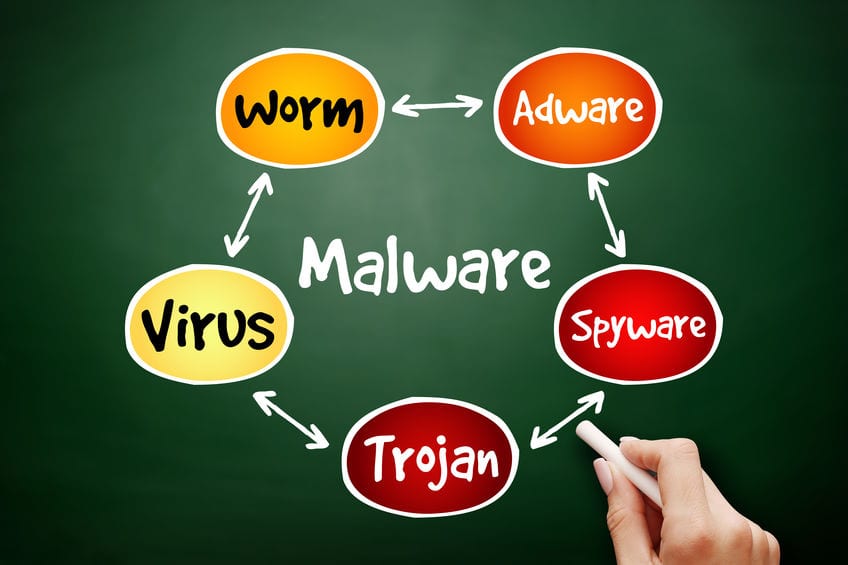Mallory King - February 9, 2020 - Brand Protection, Cybersquatting Law

As brand protection attorneys, we have noticed an increase in cybersquatters using confusingly similar domain names (many times those that can be considered typosquatting) to redirect unsuspecting consumers to various malware prompts. Malware is defined generally as “any piece of software that was written with the intent of damaging devices, stealing data, and generally causing a mess. Viruses, Trojans, spyware, and ransomware are among the different kinds of malware.” Such use can be harmful to your consumers and cause potential damage to your valuable brand.
Malware prompts can come in several various forms, ranging from pop-ups that claim to be a security check to verify that the user is human; apparent Google Chrome browser extensions; and those that claim you need a Flash Player update. The possibilities are endless but the goal is the same: to trick the consumer into clicking links and downloading software that either damages the consumer’s computer or collects sensitive information belonging to the consumer. Courts and arbitration forums both have found that distribution of malware on a confusingly similar domain name constitutes bad faith intent, making a cybersquatting claim actionable.
If one of your company’s consumers accidentally stumbles upon one of these cybersquatting malware schemes, it could reflect poorly on your brand. Thankfully, there are options available to both detect and enforce this malicious form of cybersquatting and protect your brand from being tarnished.
Cybersquatting is most often detected pursuant to trademark and domain name monitoring efforts. Sometimes companies discover these uses organically and inform their attorney, but most often attorneys — such as those at Traverse Legal — are conducting monitoring efforts specifically geared toward identifying cybersquatting and malware online. When malware is located on a confusingly similar domain name, taking enforcement action is almost always recommended.
At the outset, it is always recommended that you have a Traverse Legal attorney send a cybersquatting demand letter on your behalf to the domain name’s registrant (if known), registrar, host, and any other entity (such as a name server or reseller) that is associated with the domain name and has an abuse contact. Many registrars and hosting companies have policies that prohibit both trademark infringement and use of the domain to generate malware. This means that suspension of the cybersquatter’s account or deactivation of their website can sometimes be effectuated.
Other cybersquatting enforcement options include:
Don’t risk your brand’s reputation by neglecting domain names that may be cybersquatting on your trademark and distributing malware (or making some other bad faith use). Call the attorneys at Traverse Legal today to discuss your options and take action against cybersquatting.